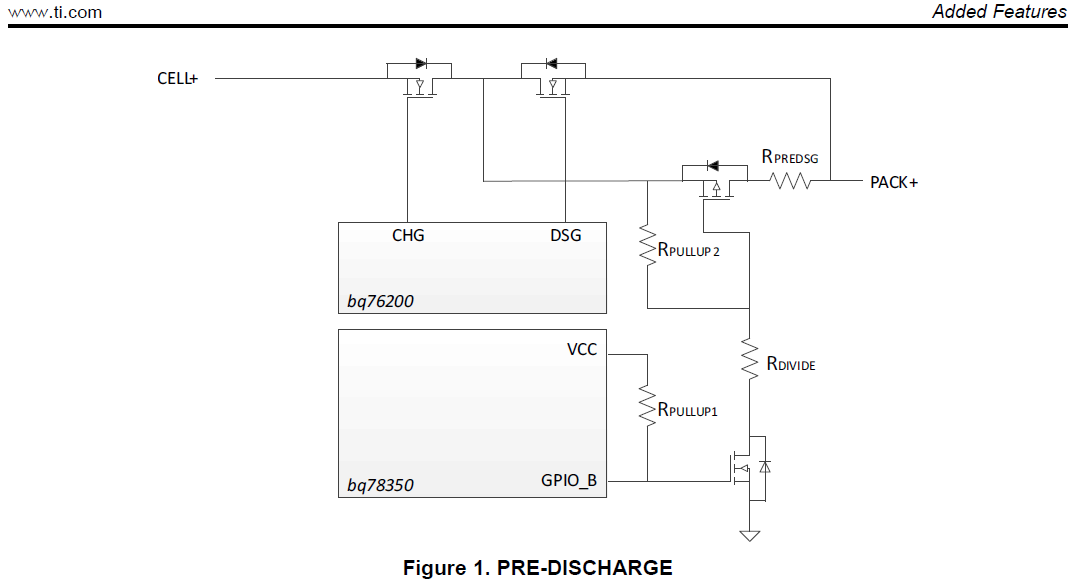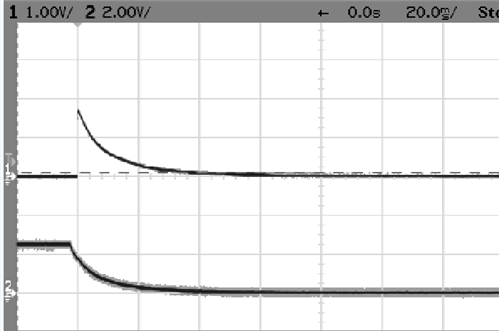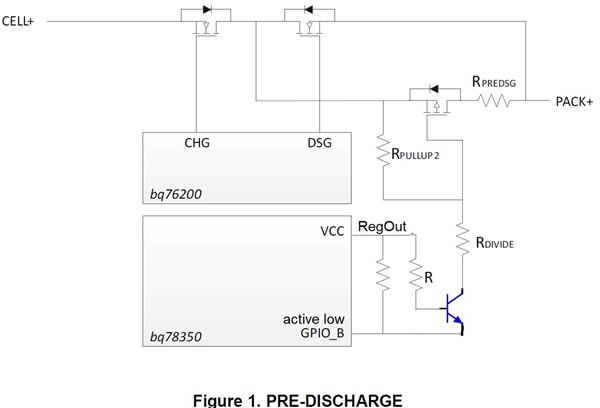Part Number: BQ78350-R2-DEVICE-FW
Hi,
we designed a 36V BMS with N-mosfet on the positive line, using the BQ78350-r2, BQ76930 and BQ76200.
We also added a pre-discharge circuit, as the one of the BQ78350-r2 Addendum (SLUUBM6).
The power supply of the BQ78350 (VCC) is the RegOut voltage, from the BQ76930.
We are facing the following issue: when the BQ78350 goes to shutdown, the pre-discharge mosfet is activated for 10-20 ms.
At shutdown, the RegOut switches off and, on the falling edge, the BQ78350 resets and leave free the GPIO_B output. On the GPIO_B there is Rpullup1 resistor (470K) that activate the mosfet.
Probe 1: GPIO_B; Probe 2: RegOut
Due to power on the Pack+ for 10-20 ms, a pulse on the TS1 boots on the BQ76930 again. So, the battery never shutdown.
What is the simpler way to avoid this pre-discharge activation during the shutdown?
Can we add a 1uF capacitor between the GPIO_B and ground?
Is there any BQ78350 parameters setting to avoid this issue?
Many thanks for any your help. Regards.
Devis




